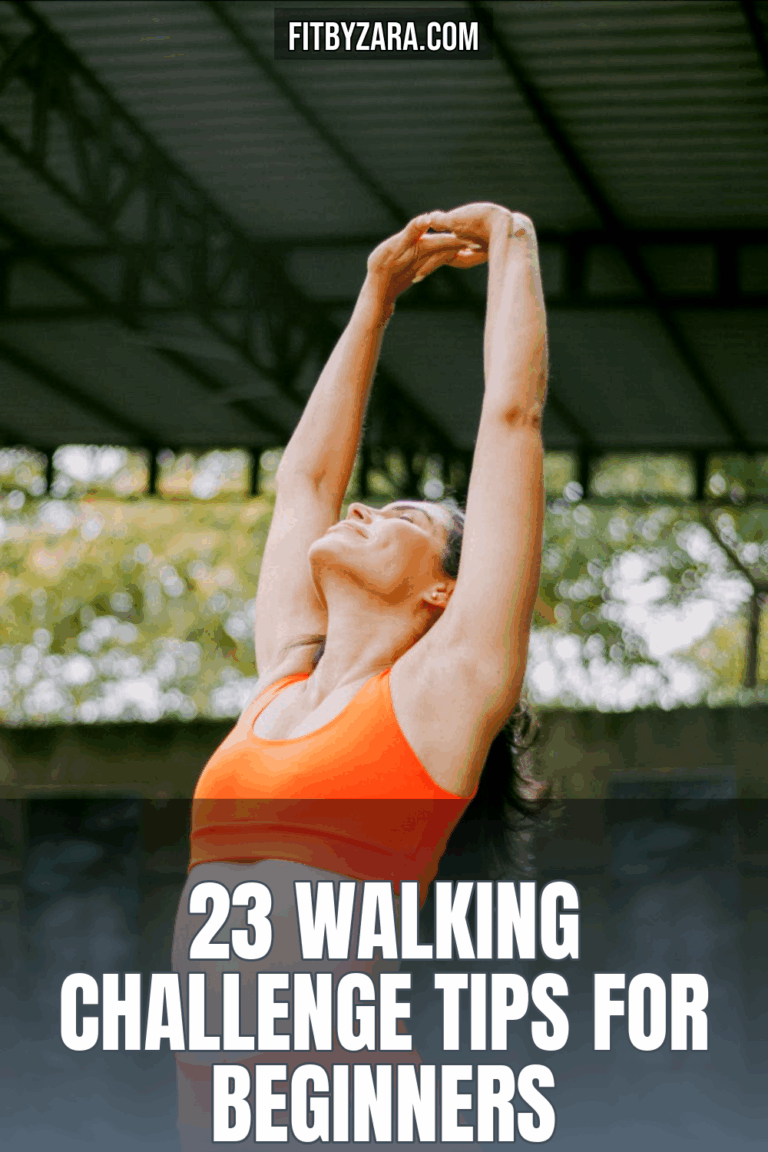Walking is one of the simplest yet most effective ways to boost your health and mood. If you’re a woman over 30 and looking to incorporate a walking challenge into your routine, you’re in the right place. Here are 23 walking challenge tips designed just for you!

Hi, I’m Zara — fitness junkie, wellness nerd, and the voice behind FitByZara.com. This site is all about smart fitness and science-backed wellness tips for real women who want to feel their best.
—
Getting Started: Setting the Foundation
3-Day Energy & Metabolism Reset
Grab the 3-Day Energy & Metabolism Reset — a quick-start guide to feel lighter, more energized, and back in control.

Where should I send your free reset guide?
1. Set Clear Goals
– Define what you want to achieve from your walking challenge. Is it weight loss, stress reduction, or simply moving more?
– Checklist:
– [ ] Goal for distance
– [ ] Goal for frequency (days per week)
– [ ] Goal for duration (minutes per walk)
2. Choose Your Challenge Duration
– Common durations include 21 days, 30 days, or even 100 days. Pick one that feels achievable yet motivating.
3. Track Your Progress
– Use an app or journal to keep track of your walks. Log the distance, time, and how you felt afterward.
– Apps to Consider:
– MapMyWalk
– Strava
– Fitbit
—
The Right Gear: Walk in Comfort and Style
4. Invest in Quality Shoes
– Good walking shoes make a world of difference. Look for supportive footwear designed for walking.
5. Wear Comfortable Clothing
– Opt for moisture-wicking fabrics that allow for movement. Layers are great for adjusting to temperature changes.
6. Accessorize Smartly
– Consider a fitness tracker or smartwatch to monitor your steps and heart rate. A good water bottle is a must too!
—
Building Your Routine: Making Walking a Habit
7. Designate Walking Times
– Choose specific times during the day to walk. Morning, lunch, or evening—whatever fits your schedule best.
8. Start Small
– If you’re new to walking, begin with 10-15 minute walks and gradually increase your distance and time.
9. Find a Walking Buddy
– Walking with a friend can make the experience more enjoyable and keep you accountable.
—
Spice It Up: Keeping Things Fresh and Fun
10. Choose Scenic Routes
– Explore parks, trails, or beaches. New scenery can keep you motivated and inspired.
11. Listen to Music or Podcasts
– Create a playlist or download some interesting podcasts to enjoy during your walk.
12. Incorporate Interval Walking
– Alternate between brisk walking and a comfortable pace. This can increase your heart rate and improve fitness.
13. Set Mini-Challenges
– Challenge yourself to add an extra 5 minutes each week, or incorporate hill walking once a week.
—
Mindfulness and Motivation: Stay Inspired
14. Practice Mindfulness
– Focus on your breath and surroundings while walking. It’s a great way to de-stress and clear your mind.
15. Visualize Your Success
– Picture yourself achieving your goals. Visualization can be a powerful motivator!
16. Celebrate Small Wins
– Every step counts. Celebrate reaching milestones, like completing your first week or hitting a distance goal.
—
Nutrition and Hydration: Fueling Your Journey
17. Stay Hydrated
– Drink water before, during, and after your walks. Hydration is key to energy and recovery.
18. Snack Wisely
– Have healthy snacks on hand to fuel your walks. Consider options like nuts, fruits, or yogurt.
—
Overcoming Challenges: Staying Committed
19. Listen to Your Body
– Pay attention to how your body feels. If you experience discomfort, take a break or adjust your pace.
20. Be Flexible
– Life happens! If you miss a day, don’t be hard on yourself. Just get back to your routine when you can.
21. Stay Positive
– Surround yourself with positive influences, and don’t hesitate to share your journey on social media for support.
—
Wrapping It Up: Embrace the Journey
22. Share Your Progress
– Join online communities or social media groups to share your walking progress. You might inspire someone else!
23. Reflect and Adjust
– At the end of your challenge, reflect on what worked and what didn’t. Adjust your goals and plans for the next challenge.
—
Zara says: “Walking is more than just putting one foot in front of the other; it’s a journey of self-discovery and wellness.”
—
Final Thoughts
Walking is a beautiful way to nurture your body and mind. With these 23 tips, you’re well on your way to embracing a fulfilling walking challenge. Remember, every step counts, so lace up those shoes and get moving!
Feel free to share your walking challenges or any tips you might have in the comments! Let’s inspire each other to walk our way to wellness!
HepatoBurn: Gentle Support for Steadier Days
When you’re stacking real habits—protein-forward meals, steps, and 7–9 hours of sleep—HepatoBurn is a simple add-on that supports the system behind energy, appetite, and metabolic rhythm.
Why Women 30+ Use It
- Pairs with an already-solid routine—no jitters, no crash.
- Easy to remember: 2 capsules with meals.
- Plays well with protein, walking, and strength training.
How to Use
- Timing: Breakfast & lunch are easy wins.
- Consistency: Use daily for a fair assessment.
- Stacks: Protein-first plates, post-meal walks, lights-down wind-down.
What It Isn’t
- Not a stimulant and not a magic fix.
- Best used alongside habits you’ll actually keep.
- Educational only—talk to your provider before new supplements.
Important: Educational only, not medical advice. Supplements don’t diagnose, treat, cure, or prevent diseases. Talk to your provider before changes to diet, exercise, or supplements.






















